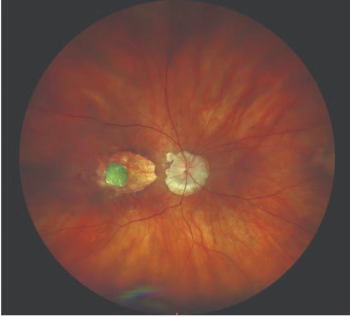
Intensive multimodal therapy found to be safe, effective for orbital retinoblastoma
Investigators observe survival rate with orbital retinoblastoma improves substantially due to a combination approach that includes intensive sequential treatment comprised of chemotherapy, enucleation, and external beam radiation therapy.
Reviewed by Fairooz P. Manjandavida, MD.
The survival rate with orbital retinoblastoma improves substantially due to a combination approach that includes intensive sequential treatment comprised of chemotherapy, enucleation, and external beam radiation therapy. Fairooz P. Manjandavida, MD, and colleagues, from LV Prasad Eye Institute, Center for Sight Eye Hospitals, Horus Specialty Eye Care, in Hyderabad, India, reported the findings.
Patients with intraocular retinoblastoma have an excellent cure rate, with physicians salvaging life, eyes, and vision. In contrast, orbital retinoblastoma that has extended beyond the confines of the eyeball is associated with high levels of mortality, and the risks of systemic metastasis are 10 to 27 times higher than the rates associated with intraocular retinoblastoma.
Most patients affected by orbital retinoblastoma, 30% to 60%, are located in Asia, Africa, and Central America, whereas in Western countries the incidence is less than 2%. An estimated 70% to 100% of patients die from orbital retinoblastoma because of the high risk of systemic metastasis.
Based on these statistics, Manjandavida and colleagues saw the need for an intensive multimodal treatment approach that combined high-dose chemotherapy to prevent metastasis; enucleation for surgical clearance; orbital radiotherapy to eliminate the residual microscopic cancer cells; and additional adjuvant chemotherapy.
The investigators undertook a retrospective analysis of a prospective nonrandomized interventional case series to determine the outcomes of primary orbital retinoblastoma subjected to this intensive regimen in patients without systemic metastasis at presentation.
Treatment included high doses of vincristine, carboplatin, etoposide as neoadjuvant systemic chemotherapy, enucleation after radiologically confirmed regression of the orbital component, and post–enucleation orbit stereotactic radiotherapy of 4500 cGy. This was followed by adjuvant chemotherapy. The patients underwent 12 cycles of systemic chemotherapy. Systemic metastasis was the primary outcome measure.
Intensive multimodal therapy
The study included 44 eyes of 44 patients (mean age, 38 months; range, 4 months-8 years) with orbital retinoblastoma over a 20-year period from July 2000 to June 2020. All patients were followed for a minimum of 12 months (mean, 88 months; range, 12-205).
Of the 44 patients, 40 completed the treatment. The investigators reported that enucleation was performed after a mean of 6 chemotherapy cycles (range, 3-9). Orbital exenteration was not needed for any patient.
Twenty-one patients had transient myelosuppression, which was managed conservatively.
Systemic metastasis occurred in 1 patient (2.5%), and 39 (97.5%) were alive and well at a median follow-up of 82 months with a 95% 10-year survival rate by Kaplan-Meier estimate, reported the investigators.
Based on these results, the authors concluded that intensive multimodal therapy is safe and very effective in improving survival in patients with orbital retinoblastoma.
Newsletter
Keep your retina practice on the forefront—subscribe for expert analysis and emerging trends in retinal disease management.










































